GIORGIO AGUGIARO
Bruno Kessler Foundation
Giorgio Agugiaro is researcher at the Bruno Kessler Foundation (Trento, Italy) in the 3D Optical Metrology (3DOM) unit. In 2013 he has been working as visiting researcher at the Technische Universität München (Germany).
Born in 1977, he completed in 2002 his studies in environmental engineering at the University of Padova (Italy). In 2007-2008 he moved to Berlin to carry out the largest part of his doctoral research work dealing with spatial data integration issues. He received in 2009 his Ph.D. in Geomatics as a joint doctorate between the Technische Universität Berlin and the University of Padova.
His main research topics are in the field of Geographical Information Systems and spatial data integration, with particular focus on virtual city modelling and their energy-related topics.
He is currently working group officer in the ISPRS Technical Commission 4 (WG1), focussing on methods for the update and verification of geospatial databases.
CityGML as information hub for energy-related simulations and planning at urban scale
Global population growth, trend to urbanisation, and higher demands on the living standard require an answer from urban planning concerning the whole energy-cycle.
Today, city energy-planning is confronted with difficult questions, such as how to choose between different types of energy production and distribution technologies, how to deal with construction and extension of supply and utility infrastructures, how to increase energy efficiency (e.g. by renovating buildings), how to simulate and evaluate the impact of these measures, how to evaluate (spatially and temporally) the energetic performance of a city and quartier respectively, and how to simulate different scenarios according to different energetic policies.
Answering these questions demands a holistic approach for strategic energy-planning from the perspective of the city administration and the energy providers, as well. The strategic planning, at the same time, requires precise understanding of the complex system interdependencies at urban level. A comprehensive knowledge of the demand and supply of energy resources, including their spatial distribution within urban areas, is therefore of utmost importance.
One possible approach to assess such urban-scale problems consists in obtaining the energetic characteristics of the buildings by means of a virtual 3D city model. With the growing availability of virtual 3D city models in recent years, energy system modelling, analysis and simulation processes can be incorporated into these models, leading to a synergetic interaction between accurate building models and energy simulation models. This allows a more realistic depiction of the urban structure, therefore representing a useful platform to help policy makers.
It must be stressed that the term virtual 3D city model does not refer only to geometry. All city objects included in it, such as buildings, transportation and utility networks, water bodies, etc., are described not only in terms of geometry, but also by semantics (e.g. building type, usage, construction date) and topology (e.g. adjacency to other buildings, shared walls).




